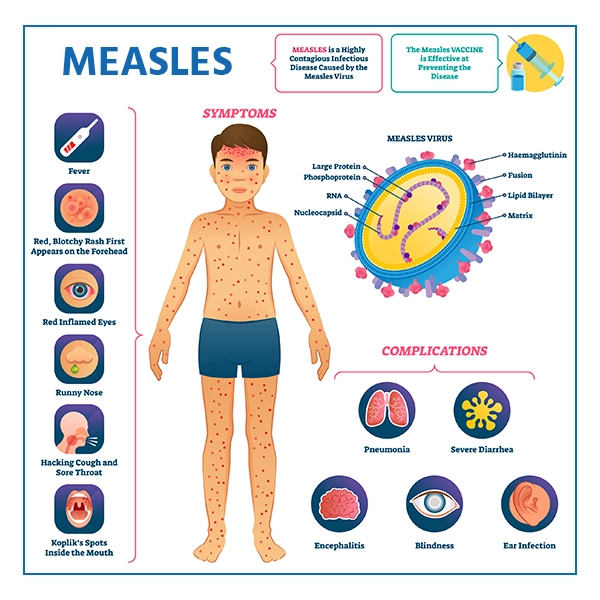What Causes Measles?
The measles virus (MeV) is transmitted primarily through respiratory droplets when an infected person coughs or sneezes. The virus can stay in the air or on surfaces for up to 2 hours, making it extremely contagious—up to 90% of non-immune people who are exposed will get infected
Indulge in the finest beauty and health products, where expert care meets luxurious cosmetics to enhance your natural glow.

Symptoms of Measles
Symptoms usually appear 10–14 days after exposure and often begin with:
- High fever
- Cough
- Runny nose (coryza)
- Red, watery eyes (conjunctivitis)
- Koplik spots: small white spots inside the mouth (a unique sign of measles)
- A red, blotchy skin rash that starts on the face and spreads down the body
💥 Complications
Measles can be dangerous, especially in:
- Children under 5 years
- Adults over 20
- Pregnant women
- People with weakened immune systems
Possible complications include:
- Pneumonia (most common cause of death in children)
- Encephalitis (brain swelling, which can cause seizures and disability)
- Blindness
- Severe diarrhea and dehydration
- Subacute sclerosing panencephalitis (SSPE): a rare but fatal brain disorder that can appear years later

🛡️ Prevention: Measles Vaccine
The measles vaccine is a live-attenuated virus and is usually given as part of the MMR vaccine (Measles, Mumps, Rubella). It's:
- Highly effective: 93% after one dose, 97% after two
- Safe and widely recommended by the WHO and CDC
- Responsible for reducing global measles deaths by over 80% since 2000